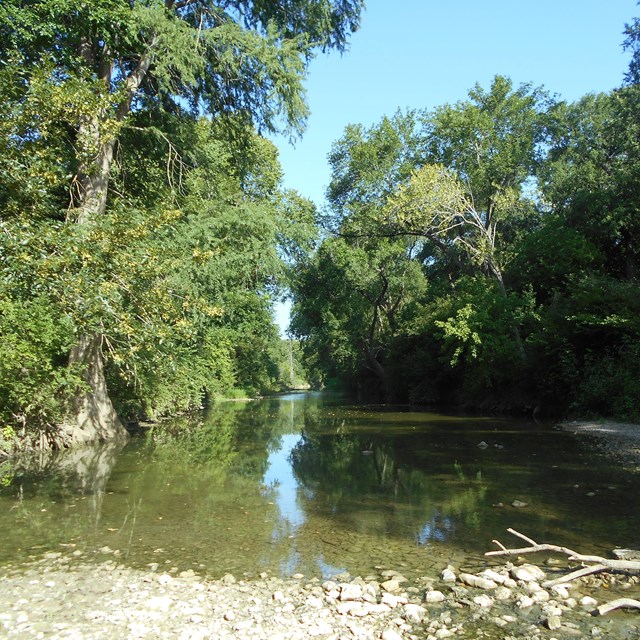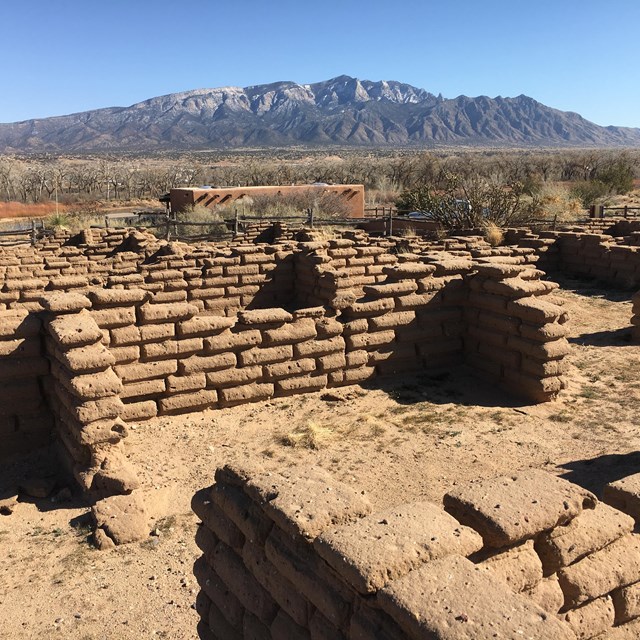Last updated: February 12, 2021
Article
Comanches and Horses

Photo/NPS
Historians often cite the importation of large horse herds as one of the Spanish empire's biggest impacts on the Americas. Ironically, these very herds helped transform Comanches into Spain's most formidable rival. First and foremost, their adoption of horses in the early eighteenth century allowed the Comanches to build a lifestyle based on bison hunting; horses thus helped the Comanche transform boundless fields of grass into the caloric fuel (bison meat) needed for their rapid population growth. Yet horses were more than just transportation--they were also important commodities in the Comanches' multifaceted trade network, which also featured slaves, weapons, bison skins, and metal goods. Their alternating strategies of trading and raiding confused Spanish officials, allowing Comanches to gradually drain New Mexico and Texas--and, by proxy, the Spanish empire--of food, animals, and population. Fueled by the seemingly endless food provided by the Great Plains, Comanche horses enabled their riders to build a massive economic system stretching from the northern plains south into Mexico.
Horses were a precious resource, but they also needed grass--lots of grass. Again, Comanches adapted to suit their favorite mode of transportation. As their population grew throughout the eighteenth century, Comanches divided into increasingly smaller groups to avoid overgrazing; they also controlled the size of their rancherias (communities of roughly 250 people and 1,000 horses/mules) and moved campsites frequently. Yet despite this geographic flexibility, horses enabled Comanches to stay in constant communication and coordinate decision-making across vast distances.
Horses eventually become a liability during a dry spell in the 1840s and 1850s, as the Comanches' massive horse herds took up forage, water, and shelter that bison desperately needed. Over-hunted by multiple groups, the bison herds reached their breaking point; the Comanches adapted once again by eating their horses and mules. Yet it is important to note that this was a last result--in all but the most desperate times, horses were too politically, militarily, and economically valuable to be food. The Comanches never regained their former strength, but--with the help of their horses--they once controlled a territory that one historian describes as "larger than the entire European-controlled area north of the Rio Grande."
Pekka Hamalainen, Comanche Empire (New Haven, Conn.: Yale University Press, 2008), 1 (quote), 242-46, 295-300, 346-47.
More information on the controversy about horses being introduced by the Spanish.
Tags
- el camino real de los tejas national historic trail
- el camino real de tierra adentro national historic trail
- santa fe national historic trail
- el camino real de tierra adentro
- el camino real de los tejas trail
- el camino real de los tejas national historic trail
- el camino real de tierra adentro national historic trail
- el camino real de tierra adentro trail
- transportation
- comanche
- article
- santa fe trail


